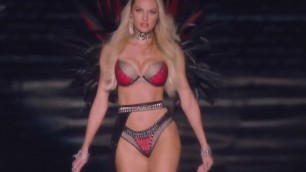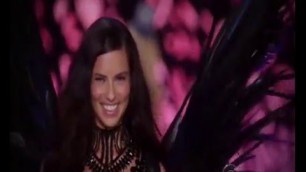

05:11
Sep 24, 2022
5
3
'This video is about the Evolution, History and Timeline of the Women\'s Fashion in Europe and other countries under influence of the Western world. Clothing established social status and individuality. What is the future of Women Fashion 20 years from now? Please share with us your thoughts! Thank you for watching. Subscribe for weekly content! Overview: Evolution, History and Timeline 400–1100: Early medieval European dress, main feature of the period was the meeting of late Roman costume with that of the invading peoples who moved into Europe over this period. 1100–1200: Twelfth century European fashion was simple and differed only in details from the clothing of the preceding centuries. 1200–1300: Costume during the thirteenth century in Europe was very simple for both men and women, and quite uniform across the continent. 1300–1400: Fashion in fourteenth-century Europe was marked by the beginning of a period of experimentation with different forms of clothing. 1400–1500: Fashion in 15th-century Europe was characterized by a series of extremes and extravagances 1500–1550: Contrasting fabrics, slashes, embroidery, applied trims, and other forms of surface ornamentation became prominent. 1550–1600: Fashion in Western European clothing was characterized by increased opulence. 1600–1650: Clothing characterized by the disappearance of the ruff in favour of broad lace or linen collars. Waistlines rose through the period for both men and women 1650–1700: Baroque Style. Wide, high-waisted look of the previous period was gradually superseded by a long vertical line, with horizontal emphasis at the shoulder. 1700–1750: Late Baroque/Rococo style 1750–1775: Characterised by greater abundance, elaboration and intricacy in clothing designs, loved by the Rococo artistic trends of the period. 1775–1795: Western culture became simpler and less elaborate. 1795–1820: European and European-influenced countries saw the final triumph of undress or informal styles over the brocades, lace, periwigs and powder of the earlier 18th century. 1820s: European and European-influenced countries, fashionable women\'s clothing styles transitioned away from the classically influenced \"Empire\"/\"Regency\" styles 1830s: Women\'s clothing styles had distinctive large \"leg of mutton\" or \"gigot\" sleeves. 1840s: European and European-influenced clothing is characterized by a narrow, natural shoulder line following the exaggerated puffed sleeves of the later 1820s and 1830s 1850s: Clothing is characterized by an increase in the width of women\'s skirts supported by crinolines or hoops, and the beginnings of dress reform 1860s: Characterized by extremely full-skirted women\'s fashions relying on crinolines and hoops and the emergence of \"alternative fashions\" under the influence of the Artistic Dress movement. 1870s: European and European-influenced clothing is characterized by a gradual return to a narrow silhouette after the full-skirted fashions of the 1850s and 1860s. 1880s: Characterized by the return of the bustle. The long, lean line of the late 1870s was replaced by a full, curvy silhouette with gradually widening shoulders. 1890s: characterized by long elegant lines, tall collars, and the rise of sportswear. 1900s: Western world continued the severe, long and elegant lines of the late 1890s. Tall, stiff collars characterize the period, as do women\'s broad hats and full \"Gibson Girl\" hairstyles 1910s: Western world was characterized by a rich and exotic opulence in the first half of the decade in contrast with the somber practicality of garments worn during the Great War. 1920s: The 1920s in fashion saw a modernization. For women, fashion had continued to change away from the extravagant and restrictive styles of the Victorian and Edwardian periods 1930–1945: Butterfly sleeves and banjo sleeves, and exaggerated shoulder pads for both men and women by the 1940s 1945–1960: Fashion in the years following World War II is characterized by the resurgence of haute couture after the austerity of the war years. 1960s: Fashion of the 1960s featured a number of diverse trends. It was a decade that broke many fashion traditions, mirroring social movements during the time. 1970s: Fashion was about individuality. There are no rules in the fashion game now 1980s: Very bold and out there to push boundaries and show the world who they were. 1990s: Defined by a return to minimalist fashion 2000s: Often described as being a global mash up, where trends saw the fusion of previous vintage styles, global and ethnic clothing. 2010s: Defined by hipster fashion, athleisure, a revival of austerity-era period pieces and alternative fashions, swag-inspired outfits #fashiontrends #Classyfashion #elegantfashion #yesterdaytoday #womenfashion #evolution #timeline #history'
Tags: FASHION TRENDS , classyfashion , elegantfashion
See also:






!['A Small Deception - The Wesley Cousins Band - Modern Blues [Fashion Music]'](https://cdn-img01.colettefashion.com/images/56-m/338/338708_m.jpg)



!['KYRAT FASHION WEEK - Far Cry 4 - Gameplay Walkthrough #35 /w Commentary [PC/1080p/60FPS]'](https://cdn-img01.colettefashion.com/images/56-m/278/278725_m.jpg)






comments